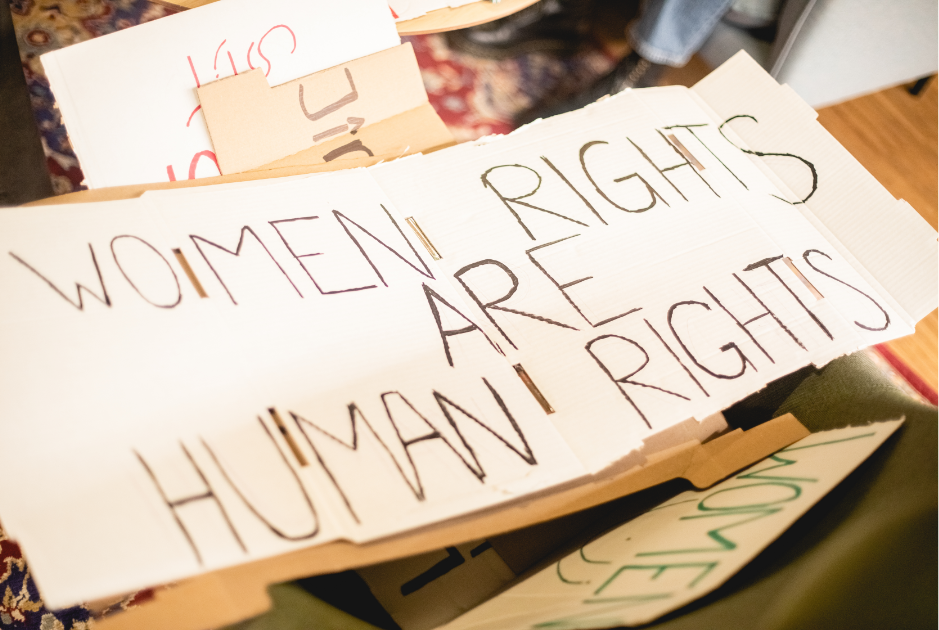For most of her life, Balanda Atis has had trouble finding a foundation that matches her skin tone. And she's far from the only woman of color to have this problem.
Growing up in a Haitian community in East Orange, New Jersey, she often heard women in her community voice their frustrations over it. There simply weren't enough specific foundation colors out there for non-white women, so they'd end up using shades that didn't really suit their skin tone.
Even after Atis started working in makeup development at L'Oréal over 18 years ago, this skin tone issue remained prevalent. It actually wasn't until 2011 that their foundation line got the diversity makeover it needed. And that's largely thanks to her.
Atis working in the lab. All photos via Upworthy.
Back in 2006, Atis began the challenging task of fixing the diversity gap in the brand's foundation line.
Their research and development team had just shared a slew of new foundations that were meant to do just that, but when Atis tried them, she told her department head that she still couldn't find her skin tone match. So he turned to her and said, "fix it."
With that, Atis began traveling all over the country collecting data on the wide spectrum of skin tones out there.
Atis and two colleagues ending up doing a lot of their reconnaissance work during their time off on nights and weekends — mostly because it had become a labor of love. As a result, it took several years to collect all the information they needed to start creating more shades. However, in retrospect, the effort was more than worth it.
She wasn't just working to correct an issue at L'Oréal — deepening and expanding foundation shade range has been an industry-wide challenge for decades.
"What drove us on those 12-hour days was knowing that we were solving a problem for women," Atis says.
Atis and a colleague testing foundation pigments.
For example, they learned that adding ultramarine blue, a less widely used color, to certain shades created deep, pure foundation colors that maintained their vibrancy. Previously, darker foundation colors tended to look flat and dull on skin.
When Atis presented their revolutionary findings, L'Oréal put her on the task of developing multi-cultural beauty products full-time as part of a new lab dedicated exclusively to this work. That lead to the creation of more than 30 new foundation shades, which were implemented across L'Oréal in 2011. Needless to say, her involvement was a total game changer.
Several of L'Oréal's brands have since utilized her research including Maybelline, Dermablend, L'Oréal Paris and Lancome.
Moreover, with more women of color becoming the faces of beauty brands, the industry is making it clear that representation matters to them. And thanks to chemistry pioneers like Atis, their image can be accurately enhanced.
That said, Atis and her team are always working to expand the L'Oréal library of shades for women of color. But Atis also has another important focus.
Today, as head of the Multicultural Beauty Lab at L'Oréal, Atis is showing girls how they too can make a huge difference in the world using science.
Together with her chemistry team, Atis explains to these avid students how they mix and create new foundations, taking into consideration factors like texture and the way light affects different pigments. The hope is that they're inspiring these chemistry enthusiasts to pursue a career in STEM (science, technology, engineering, and math fields).
The benefits of this learning program are two-fold for L'Oréal — they're infusing the STEM world with much-needed diversity and possibly increasing the pool of beauty chemists who see what's lacking in the makeup department.
Atis teaches young women about the chemistry behind making foundations.
"I think it's really important for young girls to learn about STEM, and the opportunities are so big," explains Shauna-Kaye Scotland, senior chemist at L'Oréal. "They need to know that they exist."
The experience seems to do just as much good for the scientists themselves.
"I realized the little bit I was able to share really has a huge impact on them and their future," Atis says.
There's so much possibility that comes with learning the science behind how things are made. As long as women like Atis keep opening the door to interested young women, there's no telling how diverse the spectrum of new women scientists will become.
Learn more about Atis' work with the Multicultural Beauty Lab here:





 What was I doing again?
What was I doing again? A space waitress at work.
A space waitress at work.  Waking Up Funeral GIF
Waking Up Funeral GIF Rihanna Nails GIF
Rihanna Nails GIF Yoga pants.Image via Canva.
Yoga pants.Image via Canva. Our natural lashes are nice just the way they are!
Our natural lashes are nice just the way they are! One step forward, many steps back. Image via Canva.
One step forward, many steps back. Image via Canva.  Homelessness is especially rampant on the West Coast.Image via Canva
Homelessness is especially rampant on the West Coast.Image via Canva